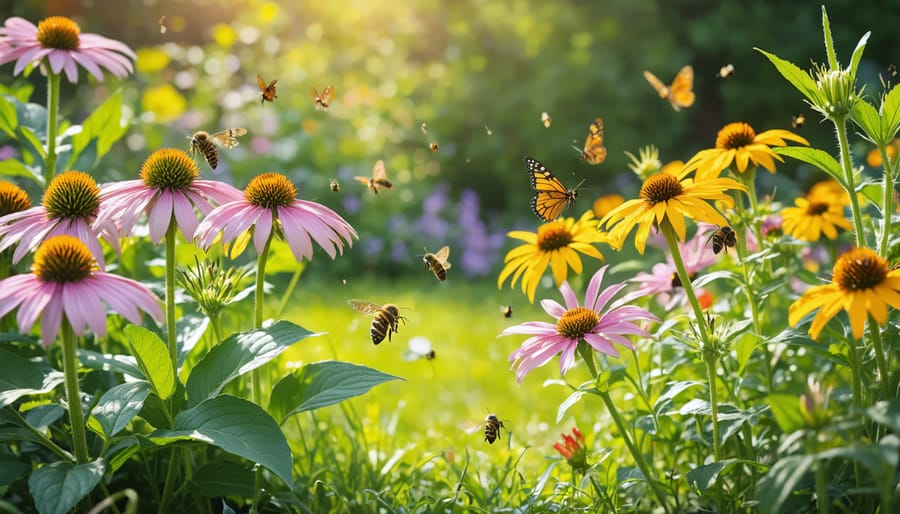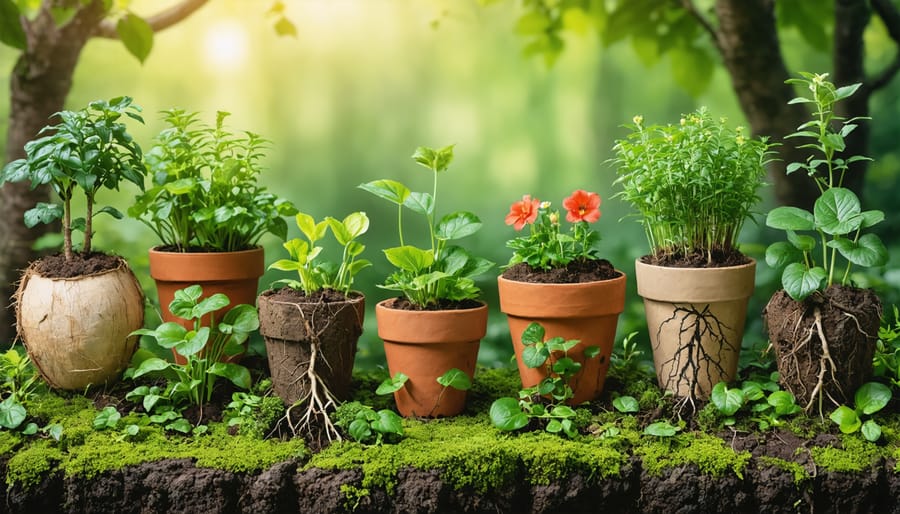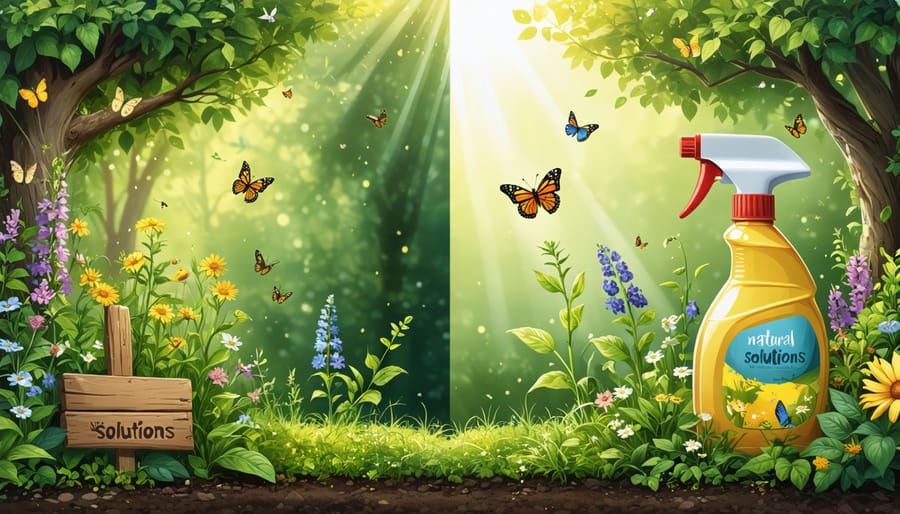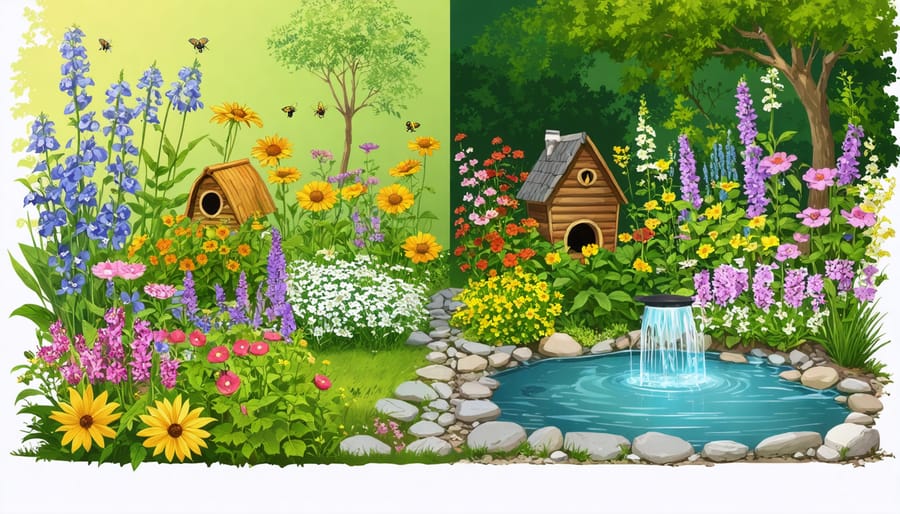Transform your Minnesota backyard into a pollinator paradise with support from the Minnesota Pollinator Garden Grant program. This initiative offers homeowners up to $500 to create vital habitats for bees, butterflies, and other essential pollinators while enhancing local biodiversity. The program, launched to combat declining pollinator populations, has already helped establish over 1,000 gardens across the state. Whether you’re dreaming of a compact butterfly garden or planning a comprehensive native plant landscape, these grants provide both financial backing and expert guidance. Applications open annually in early spring, with priority given to projects incorporating Minnesota native plants and sustainable gardening practices. From urban plots to suburban yards, the program empowers residents to play a direct role in pollinator conservation while creating beautiful, environmentally beneficial spaces in their communities.
What the MN Pollinator Garden Grant Offers
Grant Amount and Coverage
The Minnesota Pollinator Garden Grant program offers funding ranging from $500 to $2,000 per project, making it accessible for both small backyard transformations and larger community initiatives. The grant covers essential expenses including native plants, seeds, soil amendments, and mulch needed to establish your pollinator paradise. You’ll be pleased to know that the funds can also be used for educational signage and basic gardening tools specific to your project.
What makes this grant particularly appealing is its flexibility in covering both spring and fall planting seasons. Recipients can purchase plants from local Minnesota nurseries specializing in native species, ensuring your garden supports local businesses while creating habitat for native pollinators. While the grant doesn’t cover decorative elements like benches or water features, it does support structural elements necessary for pollinator success, such as bee houses and butterfly puddling stations.
Keep in mind that this is a reimbursement grant, meaning you’ll need to save your receipts and submit them for approved expenses. The program encourages cost-sharing, with grant funds covering up to 75% of total project costs, while recipients contribute the remaining 25% through cash, in-kind services, or volunteer hours.
Who Can Apply
Minnesota residents who own property or have permission to create gardens on public spaces can apply for the pollinator garden grant. This opportunity is open to individual homeowners, community groups, schools, and non-profit organizations within the state. To qualify, applicants must commit to maintaining their pollinator garden for at least three years and be willing to use native Minnesota plants in their design.
You’ll need to provide basic documentation, including proof of property ownership or written permission to use the space, a simple garden design plan, and a proposed budget. First-time gardeners are absolutely welcome! The grant program especially encourages applications from areas that currently lack pollinator-friendly spaces.
Your proposed garden should be at least 100 square feet in size and incorporate a minimum of three different native plant species that support pollinators. While gardening experience is helpful, it’s not required – the program offers resources and guidance to help you succeed.
Remember, this is a matching grant, which means you’ll need to contribute either through monetary funds, volunteer hours, or donated materials. Don’t let this deter you – even sweat equity counts toward your match!
Planning Your Grant-Worthy Pollinator Garden
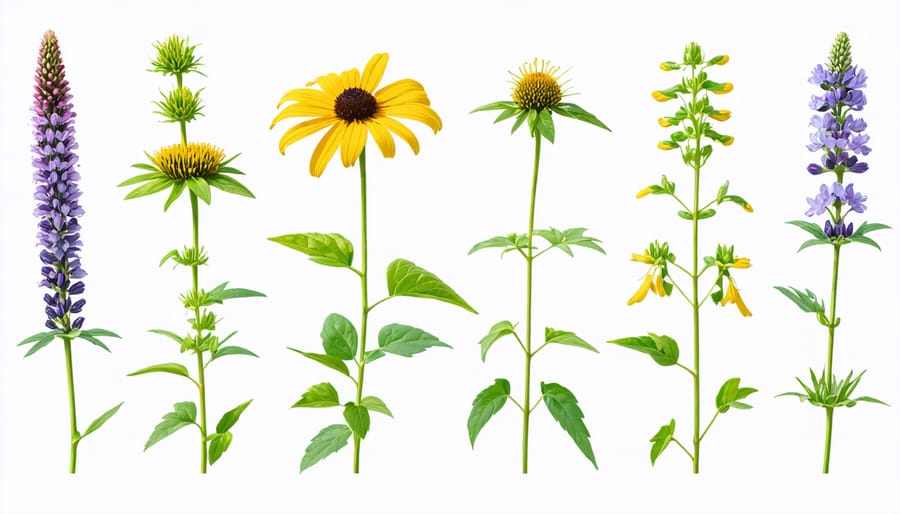
Essential Native Plants
Minnesota’s native plants are perfectly adapted to our climate and provide essential support for local pollinators. Purple Coneflower (Echinacea purpurea) is a showstopper that blooms throughout summer, attracting butterflies and bees with its vibrant purple petals and prominent center cone. Wild Bergamot (Monarda fistulosa), also known as Bee Balm, produces lavender flowers that are irresistible to bumblebees and hummingbirds.
For sunny spots, Black-Eyed Susan (Rudbeckia hirta) offers cheerful yellow blooms from June through September, while Butterfly Weed (Asclepias tuberosa) provides crucial habitat for monarch butterflies with its clusters of orange flowers. In shadier areas, Wild Columbine (Aquilegia canadensis) thrives with its nodding red and yellow blooms that attract early-season pollinators.
Don’t forget about native grasses like Little Bluestem (Schizachyrium scoparium), which provides shelter for beneficial insects and nesting materials for native bees. For late-season nectar, New England Aster (Symphyotrichum novae-angliae) produces purple flowers that sustain pollinators preparing for winter.
Consider adding Wild Lupine (Lupinus perennis) for its striking blue-purple spikes and Joe Pye Weed (Eutrochium purpureum) for its massive pink flower heads that draw countless butterflies. These native plants not only create a beautiful garden but also establish a thriving ecosystem for our local pollinators.
Garden Design Tips
When designing your pollinator garden, thoughtful layout choices can significantly impact its success. Start by selecting a sunny location, as most flowering plants thrive in full sun. Consider incorporating climate-smart garden design principles to ensure your garden thrives in Minnesota’s varying weather conditions.
Create clusters of the same plant species rather than scattered individual plants. Groups of at least three to five plants make it easier for pollinators to spot their favorite flowers and gather nectar efficiently. Include plants of varying heights, with taller species at the back and shorter ones in front, creating natural “landing zones” for different pollinators.
Plan for continuous blooming throughout the growing season by selecting plants with different flowering times. Early spring bloomers like wild lupine, summer favorites such as butterfly weed, and fall-blooming asters ensure pollinators have food sources from frost to frost.
Leave open spaces between plant clusters for easy maintenance and pollinator movement. Include a water source, such as a shallow dish with pebbles, where insects can safely drink. Consider adding flat rocks in sunny spots – these serve as warming stations for butterflies on cool mornings.
Remember to incorporate both native grasses and flowering plants. The grasses provide essential shelter and overwintering sites for beneficial insects, while also adding beautiful movement and structure to your garden design.
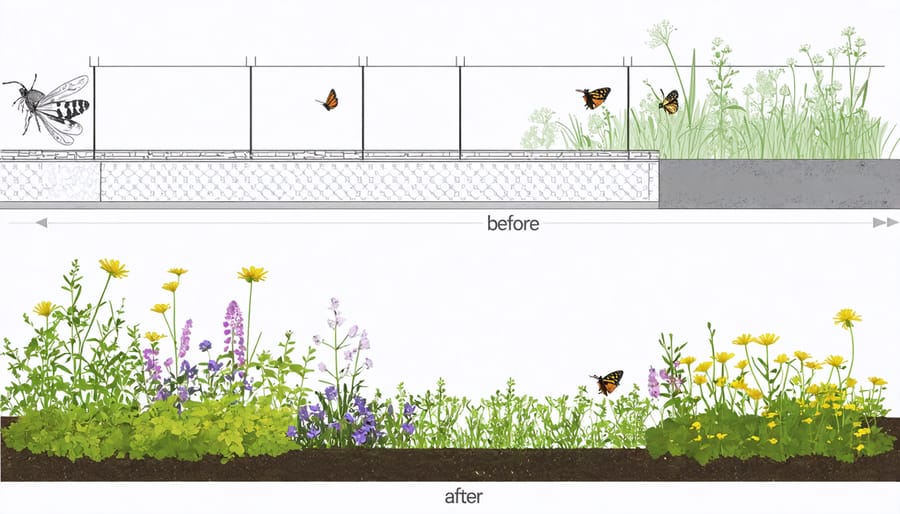
Application Success Strategies
Timeline and Deadlines
The Minnesota Pollinator Garden Grant program accepts applications annually, with the next submission window opening on February 1, 2024. Interested gardeners should mark their calendars for these key dates:
Application Period: February 1 – March 15, 2024
Initial Review: March 16 – April 15, 2024
Award Notifications: May 1, 2024
Project Implementation: May 15 – October 31, 2024
Final Report Due: November 15, 2024
To ensure your application is considered, complete submissions must include:
– Detailed garden design plan
– Project budget breakdown
– List of native plants to be included
– Property owner’s permission (if applicable)
– Photos of the proposed garden site
– Timeline for implementation
Early submissions are encouraged, as grants are awarded on a first-come, first-served basis to qualified applicants. Don’t worry if you miss this year’s deadline – the program runs annually, giving you plenty of time to prepare for next year’s cycle. Remember to gather all required documents well in advance to avoid last-minute rushing.
Application Tips
To make your grant application stand out, start by thoroughly documenting your garden plan with clear, measurable goals. Include specific details about the native plants you’ll use and explain how your garden will benefit local pollinators. Provide a realistic timeline and budget breakdown, showing you’ve done your research on material costs.
Remember to highlight any community involvement or educational components of your project. Whether it’s partnering with local schools or organizing workshops, these elements demonstrate broader impact. Include high-quality photos of your proposed garden site and consider creating simple sketches of your garden layout.
Address sustainability in your application by explaining how you’ll maintain the garden long-term. Mention specific practices like water conservation methods and natural pest management strategies. If you have any relevant experience or have completed similar projects, include these details but don’t worry if you’re new to gardening – enthusiasm and well-thought-out plans count too!
Be sure to proofread your application carefully and submit it well before the deadline. Consider having a fellow gardener review your application for clarity and completeness.
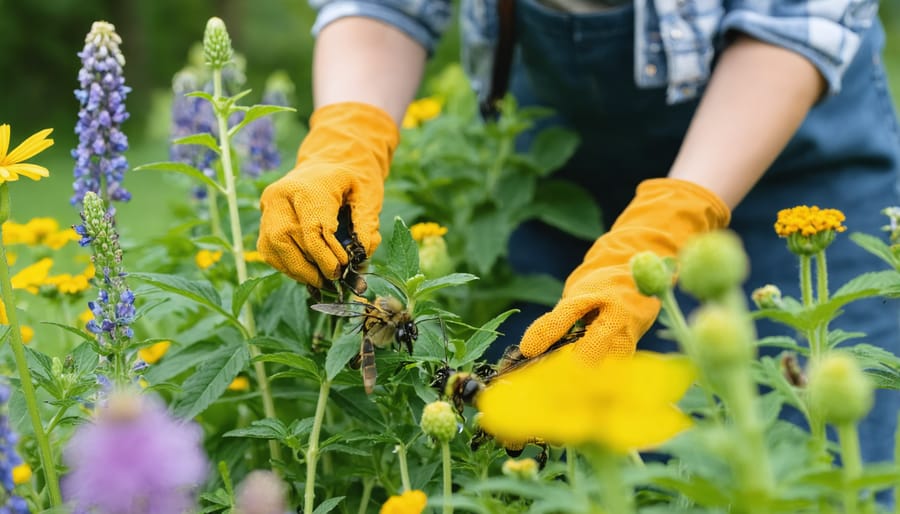
Maintaining Your Funded Garden
Once your pollinator garden is established with grant funding, maintaining its beauty and functionality becomes your next rewarding challenge. The key to long-term success lies in developing a consistent maintenance routine that works with nature, not against it.
Start by learning how to maintain healthy garden soil through regular composting and mulching. A 2-3 inch layer of organic mulch helps retain moisture, suppress weeds, and provide natural nutrients as it breaks down.
Water deeply but infrequently to encourage deep root growth. Most native plants are drought-tolerant once established, but they’ll need regular watering during their first growing season. Consider installing a drip irrigation system to make this task more manageable.
Deadheading spent blooms encourages continuous flowering and prevents aggressive self-seeding. However, leave some seedheads standing in fall – they provide essential food for birds and winter interest in your garden.
Resist the urge to clean up too thoroughly in fall. Many beneficial insects overwinter in plant debris and hollow stems. Instead, wait until spring temperatures consistently reach 50°F before cutting back dead plant material.
Monitor your garden regularly for invasive species and remove them promptly. This helps maintain the ecological balance and ensures your native plants have room to thrive. Keep a garden journal to track what works well and what might need adjusting in future seasons.
Remember that a pollinator garden is meant to be a living ecosystem. Some plant damage from insects is natural and even beneficial – it’s a sign your garden is supporting local wildlife as intended. Embrace the wonderful chaos of nature while keeping things tidy enough to meet grant requirements and neighborhood standards.
Creating a pollinator garden in Minnesota has never been more accessible, thanks to the state’s pollinator garden grant program. By taking advantage of this funding opportunity, you can contribute to the vital mission of protecting our native pollinators while creating a beautiful, sustainable garden space. Whether you’re a homeowner, community organization, or school representative, the time to act is now. Remember to carefully review the grant requirements, submit a thorough application, and start planning your garden design. With proper preparation and dedication, you can transform your outdoor space into a thriving habitat that supports local ecosystems and brings joy to both pollinators and people alike. Don’t wait to make a difference – start your pollinator garden journey today and become part of Minnesota’s growing network of pollinator-friendly spaces.

